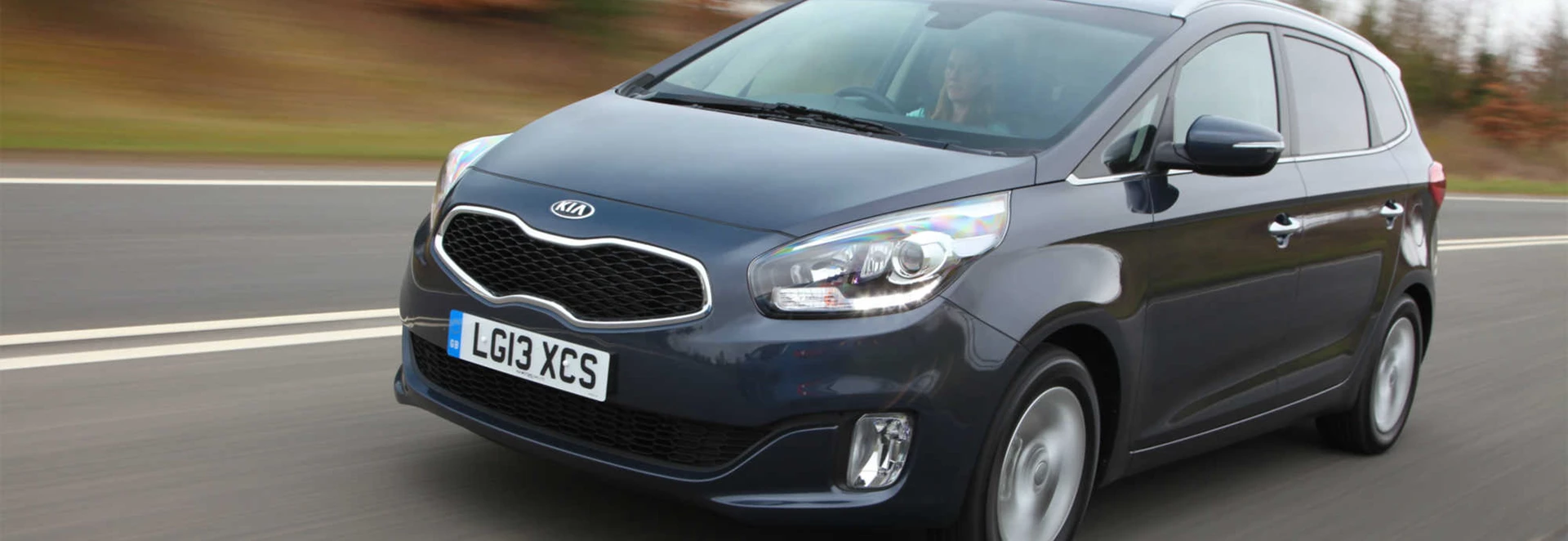There’s an ongoing quest for carmakers to create attractive seven-seaters that also win on the space and practicality front. And it’s finally becoming a reality after some former monstrosities in the segment.
The Kia Carens is the Korean brand’s bid for compact MPV market share, and is the final car in the line-up to receive a design makeover from Peter Schreyer.
The fourth-generation model is only offered with seven seats, rather than the previous choice of five or seven and also replaces its lumpy-looking Sedona model. Most notably, it’s a massive improvement over its predecessor on all fronts – looks, ride comfort, refinement and power.
Performance
We tested the lower-powered diesel, a 1.7-litre 114bhp unit, that achieves 0-60mph in 12.6 seconds. It actually feels slightly faster than that, but then again, when you are carrying seven people expect it to feel a little more sluggish.
There’s also the 1.7-litre 134bhp iteration, which hits 60mph in 10 seconds, making it a more likely choice for towing or regular seven-occupant occasions.
And then there’s the 1.6-litre GDI petrol engine with 133bhp, which might seem sprightlier off the mark, but falls between the two diesels for speed, achieving 0-60mph in 10.9 seconds. It’s also the least efficient (unless you opt for the automatic 1.7-litre 134bhp), which makes it the most questionable choice in the line-up.
Ride and Handling
The steering is miserably sloppy; what was manageable driving around town, became painful after a long stint on the motorway.
The Carens is catered towards comfort, and on this front, it’s perfectly satisfactory. It’s a squidgy ride that happily absorbs speed bumps on the school run, and the cabin is well-insulated from noise. Unfortunately, there’s bad news too. The steering is miserably sloppy; what was manageable driving around town, became painful after a long stint on the motorway plus some twisty rural roads. There’s also no feedback, which means you’re never quite sure where you might end up on the road, while there’s a strong sense of general wandering at high speeds, despite countering from an ever-so-proficient driver (me, obviously).
Interior and Equipment
Peter Schreyer, who designed the Kia Carens, is also responsible for designing the much-loved Audi TT.
Trim levels are decidedly simple in the Carens, named 1, 2 and 3. The mid-spec 2, as tested, gets a cooled glovebox, cruise control, privacy glass, rain-sensing wipers and reversing sensors. The top trim adds features such as a panoramic sunroof, leather upholstery, heated front seats and a reversing camera, while a so-called 3 Sat Nav includes the obvious. The cabin and boot space is what’s important in this type of car, and the Carens has tough and durable plastics and finishes to handle child-induced chaos on long journeys. There are cubby holes aplenty in all rows to put paraphernalia, while the design and usability of the central console and steering wheel controls is satisfactory. Front occupant space is fine, but starts to dwindle the further you go back, with the sixth and seventh seat only suitable for small children or very short journeys thanks to little legroom. And access to those seats is arduous with the middle row feeling heavy to move. Boot space is almost non-existent, but there is a handy space under the floor for some small bits, which also stores the removable parcel shelf for when the second row of seats aren’t in use. Put that row of seats down, and you have ample room – in width, depth and height – to load the car up.
Cost
Its price is probably the redeeming quality with the Carens when it comes to costs as it is more than £2,000 cheaper than the Ford Grand C-Max.
The Carens offers CO2 emissions from just 124g/km and claims generous fuel economy of around 60.1mpg, if you opt for the 1.7-litre diesel. To be honest, in our experience with the 1.7-litre, we were getting around mid 40s. Its price is probably the redeeming quality with the Carens when it comes to costs as it is more than £2,000 cheaper than the Ford Grand C-Max. You will need to bear residuals in mind however, as the Carens is unlikely to retain much of its value.
Our Verdict
The Kia Carens far surpasses its predecessor, and is a comfortable, good-value option – if you can live with the poor driving dynamics and only plan to do shorter journeys. If you are after an affordable MPV that you don’t mind battering over its lifespan, then the Carens will certainly put up a good fight and serve you well. Overall, it falls behind competitors such as the C4 Grand Picasso or Ford’s Grand C-Max, but is a more realistic contender than ever before.




